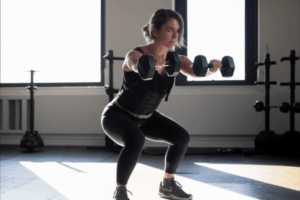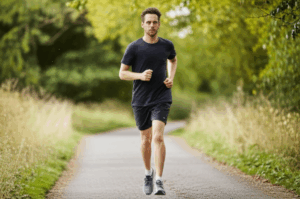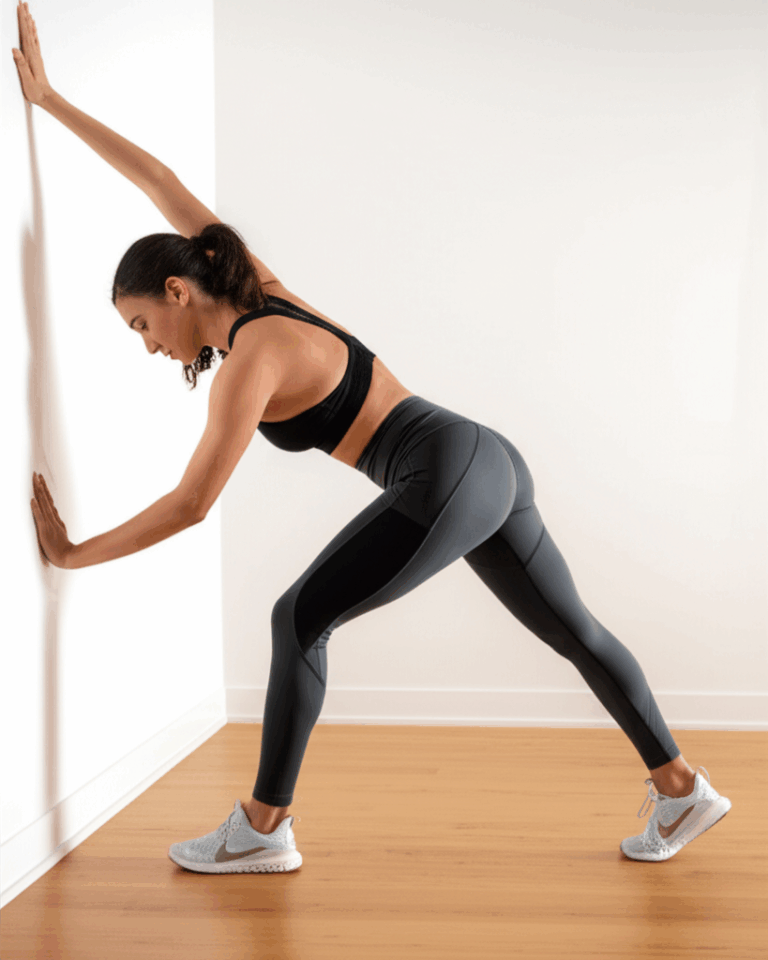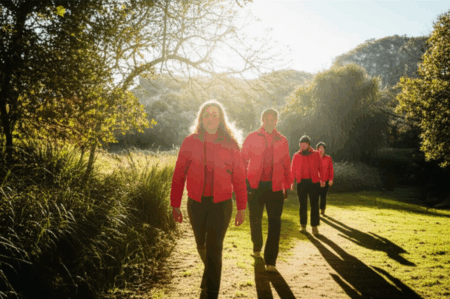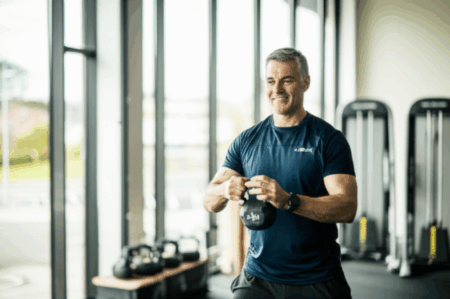Do you find yourself shying away from traditional squats or lunges due to nagging knee pain? Or perhaps you’re seeking a low-impact yet effective way to build a strong core and stable joints from the comfort of your home. The good news is that achieving robust knee and core strength doesn’t require high-impact movements or complex gym equipment. Fitness expert and journalist Maddy Biddulph has shared a simple yet powerful five-move wall workout designed to strengthen these crucial areas without putting undue pressure on your joints.
This routine leverages the support of a wall to engage major muscle groups, making it an excellent choice for individuals looking to improve functional movement, enhance balance, and reduce the risk of injury as they age. All you need is a wall, a looped resistance band, and a small Pilates ball, yoga block, or cushion to begin building a more resilient body.
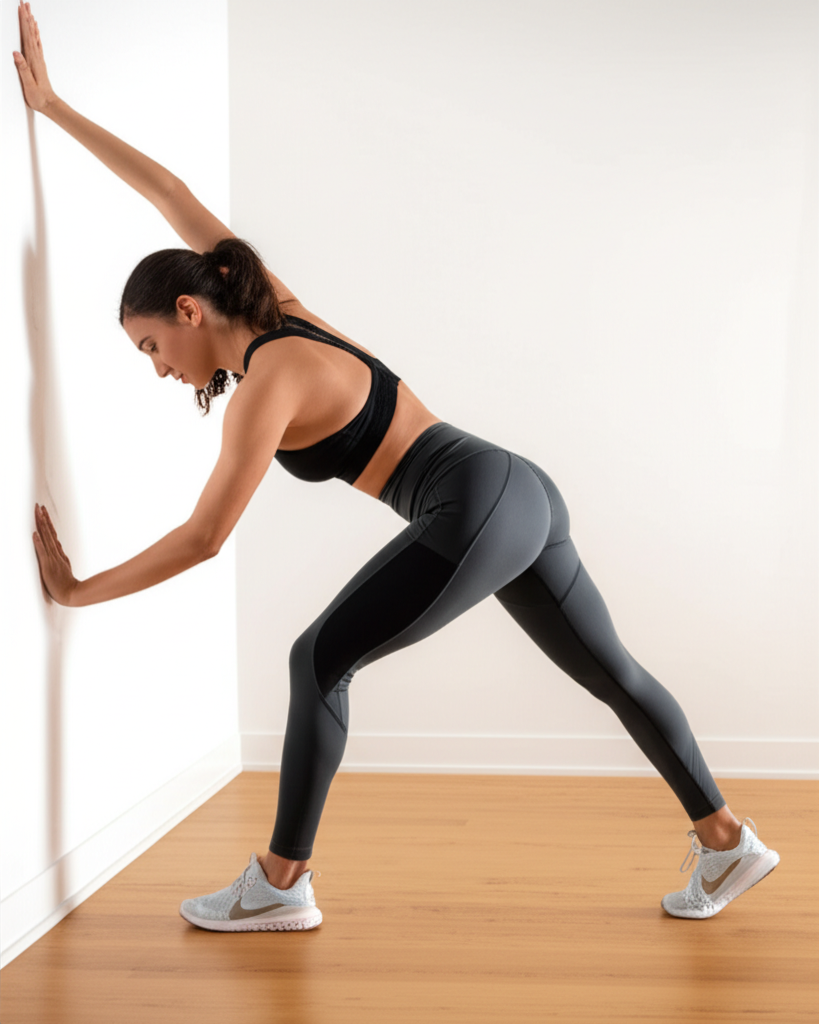
The Joint-Friendly Advantage of Wall Workouts
Wall workouts are often overlooked but offer a fantastic, low-impact method to build strength and stability. They utilize your body weight and the constant support of a wall to activate key muscles while minimizing strain on vulnerable joints like the knees. This approach is particularly beneficial for strengthening the quadriceps, glutes, and calves—muscles vital for knee support—while also engaging the core for improved balance and posture. A strong core is essential for supporting the spine and contributing to overall body stability, which, in turn, takes pressure off other joints, including the knees.
Regular low-impact exercises, such as those found in this wall routine, are crucial for keeping joints lubricated and strengthening the surrounding musculature. This can help to alleviate existing knee pain and even prevent future issues like osteoarthritis by improving joint alignment and reducing pressure on cartilage.
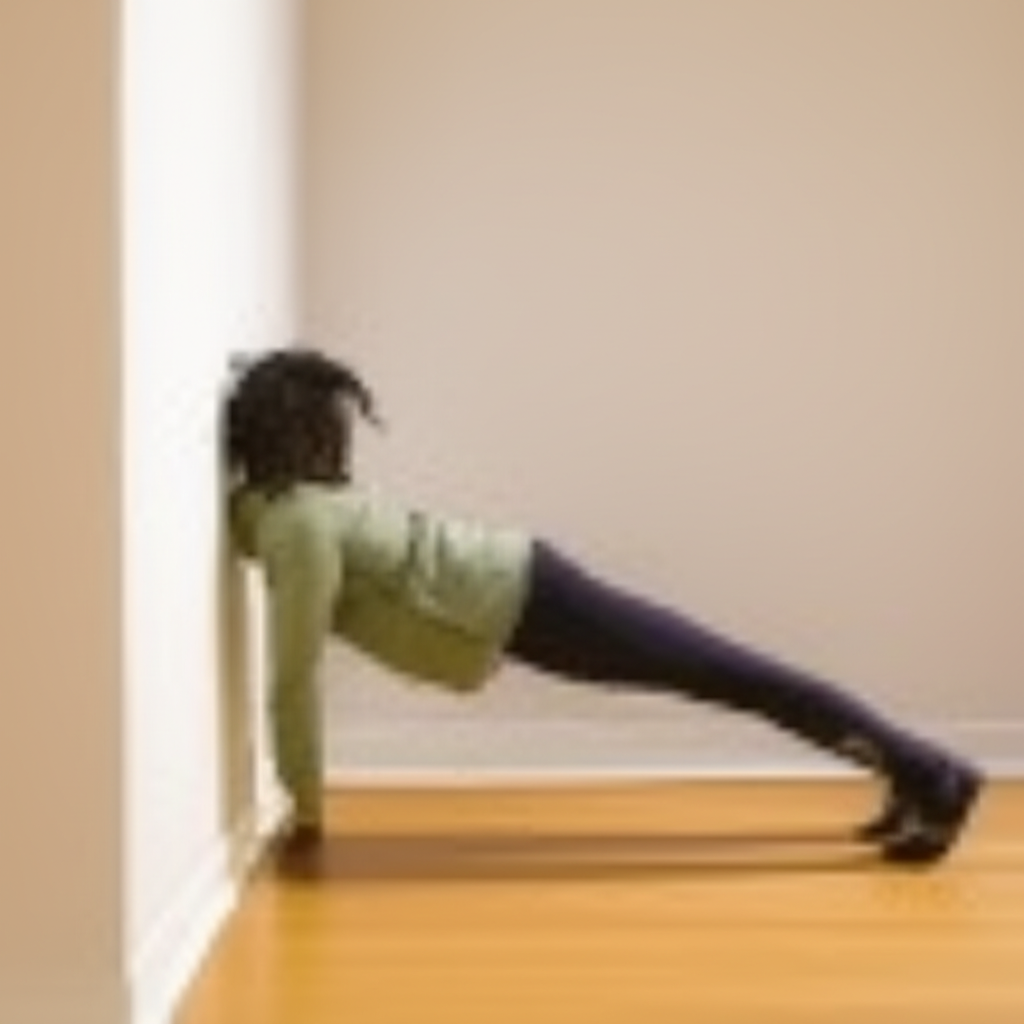
The 5-Move Wall Routine for Knees and Core
This routine focuses on isometric holds and controlled movements that build endurance and strength. Aim for 30-second rounds of each move, gradually increasing the duration to one minute as your strength improves. Complete each exercise three times.
1. Wall Sit
The classic wall sit is a foundational exercise for lower body endurance and stability.
- How to do it: Stand with your back pressed against a wall. Slowly slide down until your knees form a 90-degree angle, as if you’re sitting in an invisible chair. Ensure your hips, shoulders, and lower back remain in contact with the wall. Your knees should be directly above your ankles, not extending past your toes.
- Benefits: This move powerfully engages your quadriceps and glutes, which are critical for supporting the knee joint. It also builds core stability and endurance in your lower body.
- Form Tip: For beginners or those with knee discomfort, start with a shallower squat (a knee bend of 120-160 degrees) and gradually increase depth as strength improves and pain subsides. Engage your core by pulling your belly button towards your spine.
2. Wall Sit with Calf Raise
Adding a calf raise to the wall sit intensifies the challenge and targets additional supporting muscles.
- How to do it: From the wall sit position, keeping your back against the wall, lift both heels off the ground, balancing on the balls of your feet. Pause, then slowly lower your heels with control.
- Benefits: This variation further strengthens the calves, crucial for ankle stability and providing additional support for the knees during movement. It also enhances endurance in your lower legs.
3. Wall Sit with Ball Pulse
This move focuses on inner thigh strength and knee stabilization.
- How to do it: Return to your wall sit position and place a small Pilates ball, yoga block, or cushion between your knees. Gently squeeze the object, release slightly, and repeat in quick, small pulses.
- Benefits: The ball pulse targets the inner thighs and engages the often-neglected stabilizing muscles around your knees. This is particularly effective for improving knee alignment and reducing stress on the joints.
4. Wall Sit with Step Out
Introduce a resistance band for an added challenge to your hips and outer thighs.
- How to do it: Place a looped resistance band just above your knees. While holding your wall sit, alternate stepping one foot out to the side, then bringing it back to the center. Maintain the wall sit position throughout the movement.
- Benefits: The resistance band provides tension that specifically targets your outer thighs and hips. Strong hip muscles are integral to knee stability and can significantly reduce the risk of injury, especially with age.
5. Standing Donkey Kick
This final move strengthens the glutes and hamstrings, crucial for overall leg and core function.
- How to do it: Face the wall and place your hands against it at shoulder height for support. Lift one leg behind you, keeping your knee bent at a 90-degree angle, and press your foot back towards the ceiling. Return slowly to the starting position and repeat on the same side before switching legs.
- Benefits: The standing donkey kick effectively activates the glutes, which not only support the pelvis but also help take pressure off the knees. It also strengthens the hamstrings, contributing to improved balance and overall joint function. Using a resistance band around your thighs during this exercise can further engage and strengthen the glutes and hip abductors.
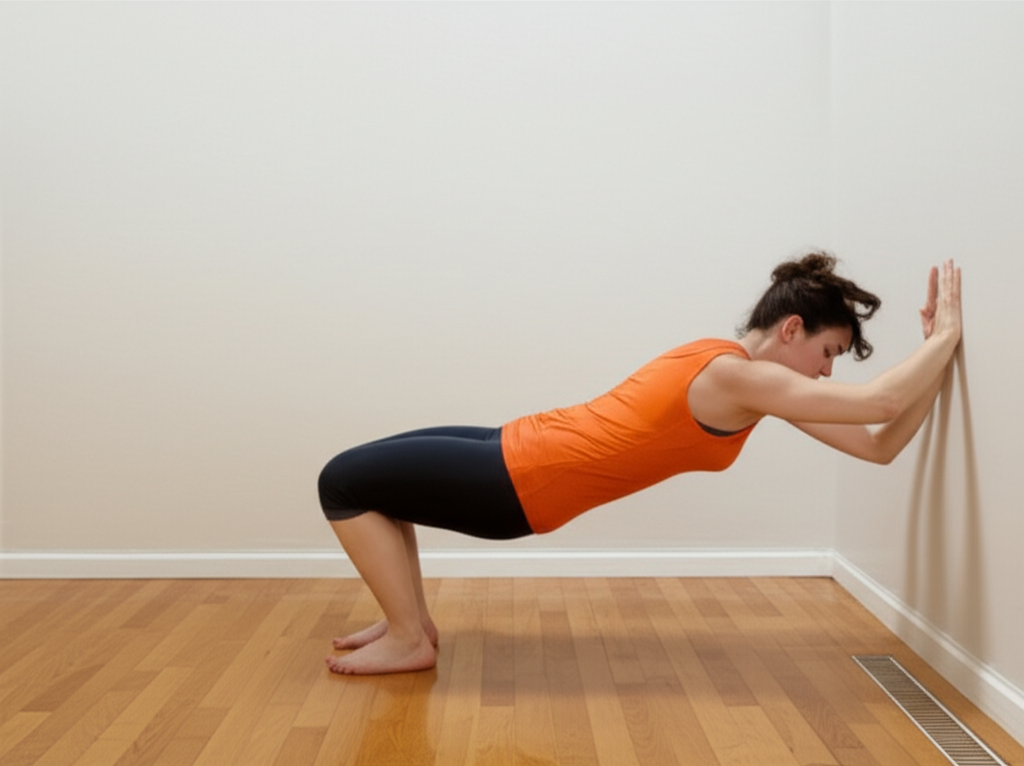
Consistency and Safety
Consistency is key to seeing results from this routine. Incorporate these exercises into your fitness regimen regularly to build sustainable strength and flexibility. As with any new exercise program, it’s always advisable to consult with your doctor or a certified fitness trainer, especially if you have pre-existing medical conditions or injuries. Listen to your body, modify as needed, and never push through pain. By embracing this joint-friendly wall routine, you can fortify your knees and core, paving the way for better movement and a more active life.


